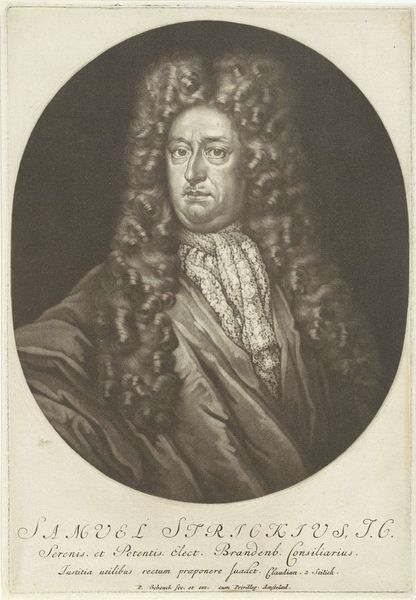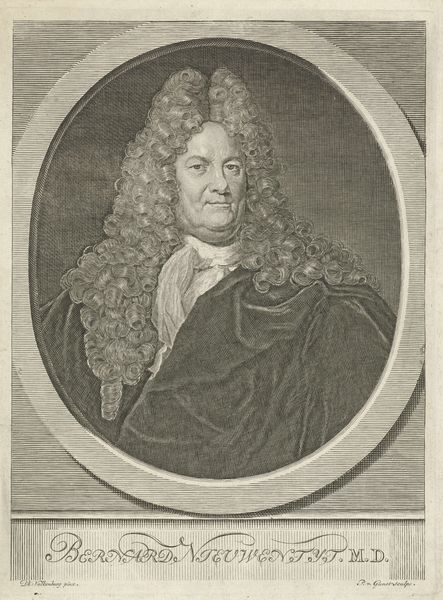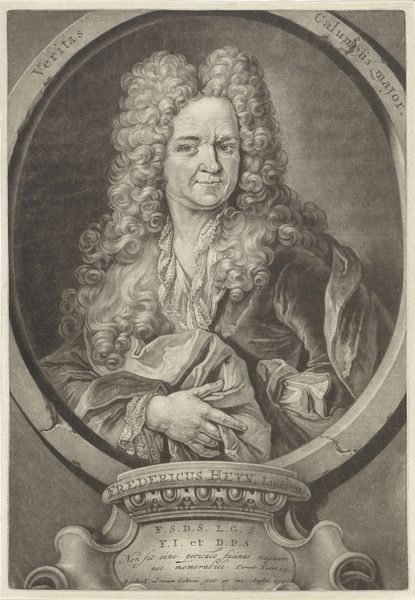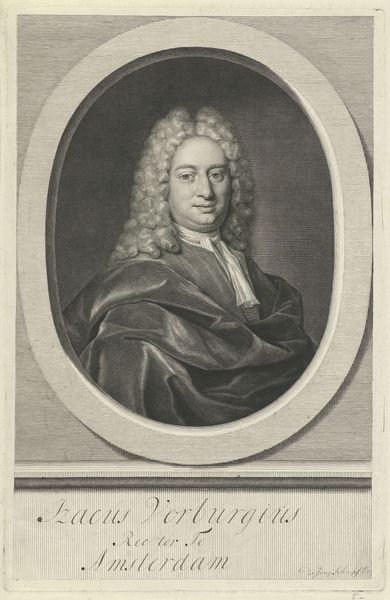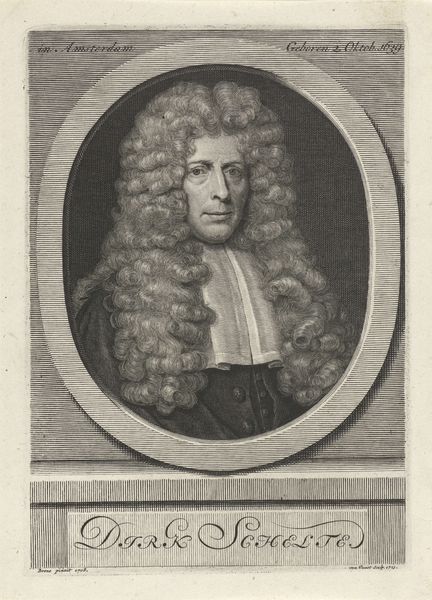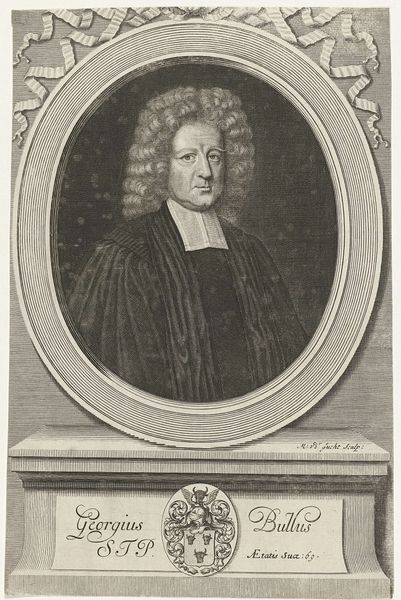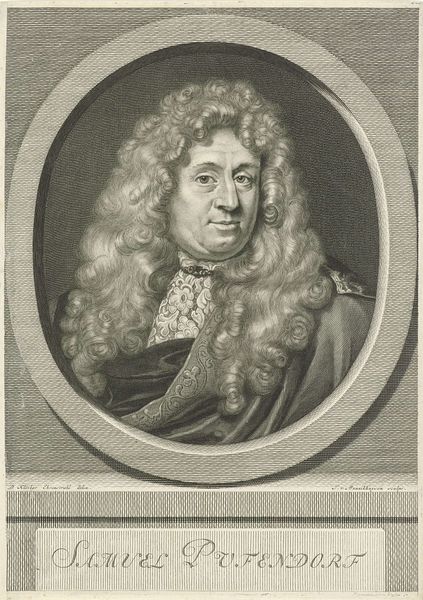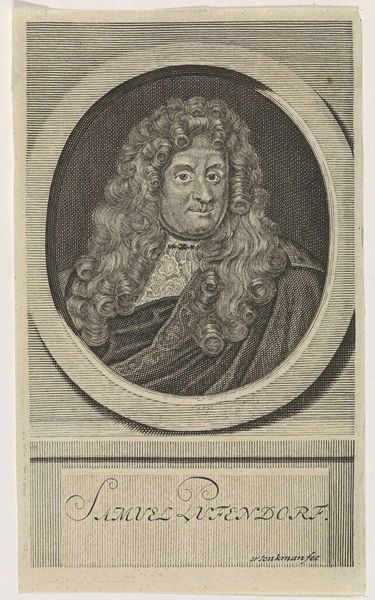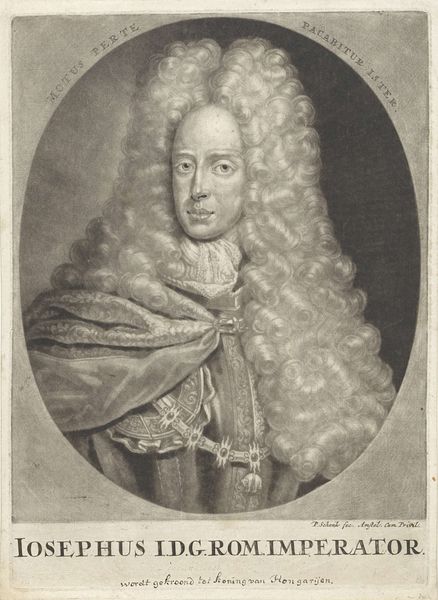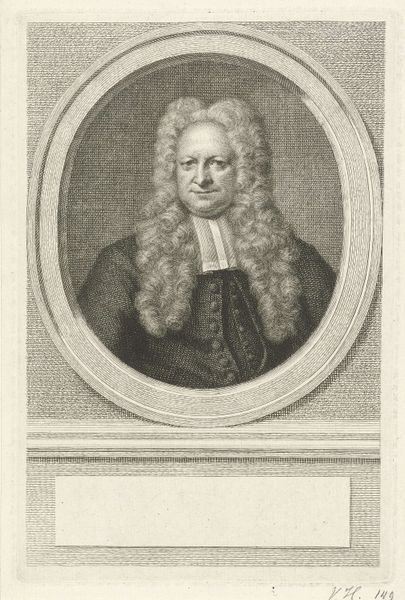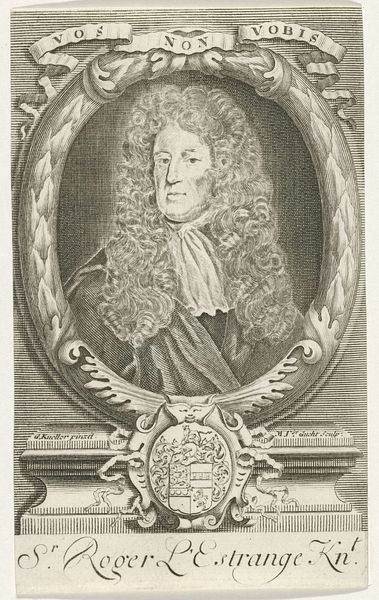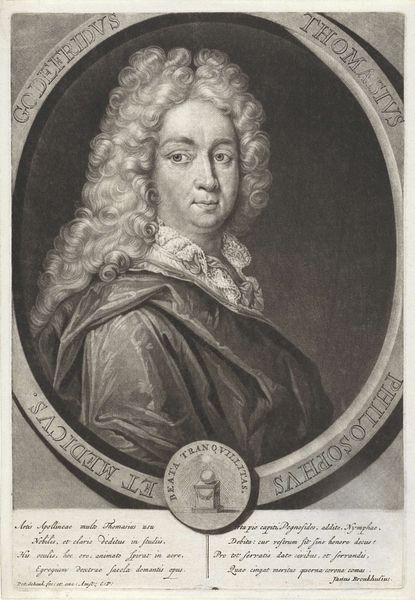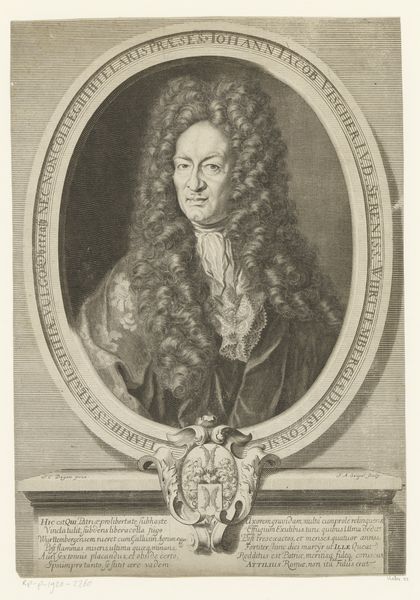
print, engraving
#
portrait
#
baroque
# print
#
old engraving style
#
portrait reference
#
history-painting
#
engraving
Dimensions: height 268 mm, width 188 mm
Copyright: Rijks Museum: Open Domain
Editor: Here we have Pieter Schenk's 1704 engraving, "Portret van Anton Ulrich hertog van Brunswijk-Luneburg," currently housed in the Rijksmuseum. It’s a striking image. I’m immediately drawn to the sheer volume of that wig, and the oval framing. What do you see in this piece, in terms of symbolic representation? Curator: Indeed, the portrait's oval form recalls a classical cameo, framing Duke Anton Ulrich within ideals of enduring legacy. Wigs in this era served as powerful signifiers of status and conformity to courtly fashion, almost like a uniform broadcasting allegiance and authority. Do you notice the inscription "CONSTANTER" above his head, and how that single word impacts your perception? Editor: It gives the portrait a stoic quality, like "steadfast," but I wasn’t sure if I was projecting that meaning. And is that a cross on his robe? What does that suggest? Curator: Excellent observation! That emblem, likely associated with a specific order or knighthood, speaks volumes. Combine that with “CONSTANTER” and suddenly the Duke is presenting himself as more than a ruler – as a guardian of tradition and faith. He’s shaping how he’ll be remembered. The portrait is therefore performing memorialization for the noble family while the individual who wears all of this clothing gets to be eternalized. Editor: I see. So the artist uses visual symbols not just to represent the Duke, but to actively construct a particular image of him for posterity. Thanks, I now see that portraiture can act as constructed identity. Curator: Precisely. And the visual echoes of similar portraits cement this individual within a broader narrative of power, lineage, and cultural memory. This helps illuminate how symbols are always in dialogue with the past.
Comments
No comments
Be the first to comment and join the conversation on the ultimate creative platform.
